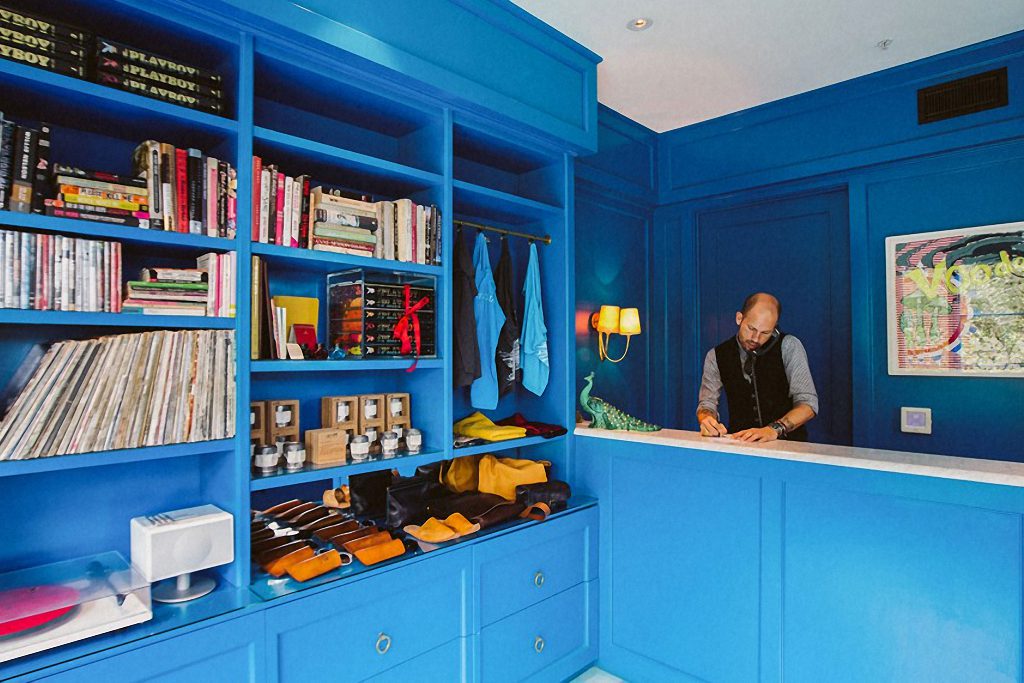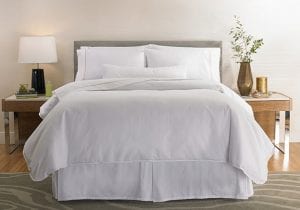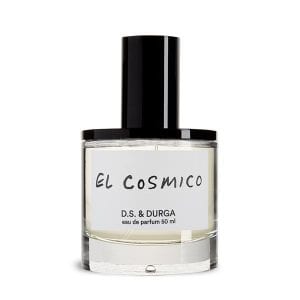Skift Take
As brands struggle to break through with consumers, they need to consider introducing themselves within the environs of hotels. It's a means to create a new relationship in a contextual way. And hospitality brands have a huge opportunity to introduce tastemakers to up-and-coming products.

On Experience
Colin Nagy, a marketing strategist, writes this opinion column for Skift on hospitality and business travel. On Experience dissects customer-centric experiences and innovation across the luxury sector, hotels, aviation, and beyond. He also covers the convergence of conservation and hospitality.
You can read all of his writing here.
The rise of direct-to-consumer brands and steady growth in entrepreneurship means that it’s harder than ever to stand out. One must only look at the rising costs of advertising on Instagram to see the demand for brand building. And a lot of these tasks are being carried out online.
But digital-first companies are increasingly realizing that physical distribution remains important in order to reach a broad swath of consumers. Note how Away, Warby Parker, Sonos, and other brands have had to move their models from online-only to physical stores as well. People can experience the product, ask a question, and engage.
One of the most interesting opportunities for hospitality brands, then, is to be a new and intimate discovery channel for consumers. This idea is nothing new, of course. Brands have been placing themselves in hotel rooms for ages: Aesop likely owes some of its initial rise to being placed in the rooms at Park Hyatt Tokyo before anyone knew the brand. The tastemaking audience who stays there helped with global pollination at an early stage. It was old-school seeding. Right people, right context, new-feeling product. Magic can happen from that.
This idea of brand-building through distribution is powerful. A luxury hotel delights in the details, and the best ones aren’t selling a bed and a room, but rather a complete world view. Hospitality brands are well-placed to introduce the right products in an inspirational context, where an audience is much more likely to be open to receiving them.
Brick-and-Mortar Brand Experience
The successful curation of brands actually deepens a hotel’s relationship with its guests. It exposes them to something new and gives social currency to guests of being early and in the know. The medium of a luxury hospitality environment is the ideal physical space within which to reach people when they’re more relaxed and out of their day-to-day routine. Specialty product discovery, moreover, resonates with consumers seeking high-end travel as a means to personal fulfillment. As our Skift Megatrend 2018 forecast, these travelers seek the transformational value of the experience and how it helps them become the person they aspire to be — including the products that speak to their desired lifestyle.
A macro success with this strategy was the Westin Heavenly Bed, a custom-made mattress by Simmons. It was a master stroke of branding that simultaneously reinforced the wellness message the brand wanted to communicate to guests, hit the “sleep as a restorative necessity” message before most of the other space (ahem, Casper) managed to latch on to it, and created a revenue stream for the brand. You can still go online and buy every little component of the Heavenly Bed today.
The artisanal ketchup Sir Kensington’s appeared on many people’s radar not from their actively seeking it out in a grocery store but rather in a hospitality context at Four Seasons, The St. Regis, and Ritz-Carlton hotels. It’s easy to get outspent by a major consumer packaged goods brand like Heinz in advertising in the battle for the supermarket aisle, but showing up in an unexpected place is a smart guerilla strategy that can pay off. Unilever acquired Sir Kensington’s in 2017, just seven years after its initial launch.
As more and more luxury consumers begin to tire of the brand giants that have omnipresence in every airport and luxury mall, the opportunity for niche brands to fight above their weight grows larger.
Expert Lifestyle Curator
Whenever I am asked who is doing the best at hospitality brand as curator, I point to Bunkhouse Group, started by Liz Lambert, who is a familiar fixture in this column. Each store, available on property and online, demonstrates a world view and nuance of the individual brand. It’s as tightly edited as a pitch-perfect mood board or front-of-book article in a great magazine and also introduces people to intriguing products. Brooklyn-based artisanal perfume house DS & Durga, for example, did a custom fragrance for the brand’s Marfa property, El Cosmico. It smells like the high desert in West Texas. The Hotel Saint Cecilia store has scarves from Block Shop textiles, Blackwing Pencils, and Sabah slippers. All are small homespun brands that make you feel like you’ve discovered something you can’t buy at an airless duty-free counter. They embody the spirit and soul of a property.
Hotels also have an incredible ability to champion small businesses. The hospitality brand Singita features a brand called Malée, founded by female African entrepreneur Zeze Oriaikhi-Sao. A brand like Singita could have its pick of any vaunted luxury brand, but by supporting a company executing with vision, it’s a signal that says a lot about the depth of the relationships the company is seeking to build at every touchpoint. And no matter how worldly or well traveled the guest, if you introduce them to something new and compelling, a relationship deepens. People like the social currency of talking about a niche find from their travels.
Aman went so far as to develop their own bath and skincare line. This, of course, is not without its challenges, as the brand has to market and position to an audience much broader than just the hotel fans to be commercially viable. But the product is thoughtful and well designed.
The envelope needs to be pushed more: sound, scent, and texture all have new corresponding brands that can help deepen the experience. Of course, there has to be a level of finesse in the presentation, as no one wants to feel like they are being overly sold to in a hospitality environment. The artful integration of items that add depth, love, and a bit of additive touch reflect positively on the brand and can create more loyalty through well-informed introductions. And for the product brands, it can create a more cost-effective way to build their customer base.
Have a confidential tip for Skift? Get in touch
Tags: away, bunkhouse group, hospitality marketing, luxury, On Experience, park hyatt, westin
Photo credit: At Hotel Saint Cecilia in Austin, Texas, the lobby also serves as retail store for unique items like its limited-edition Roux St. James fragrances, made with flowers culled from the hotel garden. Nick Simonite


